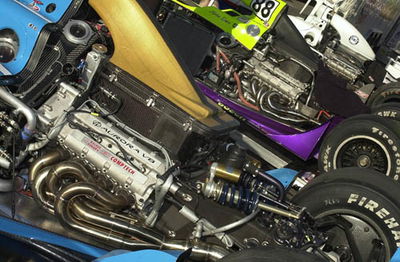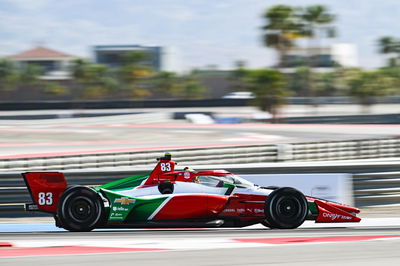IRL engines reduced to three litres for 2004.
Key chassis and engine changes for Indy Racing League IndyCar Series cars, highlighted by a reduction in engine size from 3.5 litres to three litres, will be made in 2004 starting at the 88th Indianapolis 500 in May in an effort to reduce speeds and ensure safer and exciting racing, IRL officials announced last night [16 December].
Officials from Toyota, Honda and Chevrolet, the three engine manufacturers for the IndyCar Series, will use existing 2003-05 engine designs but will modify the engines from the current 3.5 litres to a smaller three litres.

Key chassis and engine changes for Indy Racing League IndyCar Series cars, highlighted by a reduction in engine size from 3.5 litres to three litres, will be made in 2004 starting at the 88th Indianapolis 500 in May in an effort to reduce speeds and ensure safer and exciting racing, IRL officials announced last night [16 December].
Officials from Toyota, Honda and Chevrolet, the three engine manufacturers for the IndyCar Series, will use existing 2003-05 engine designs but will modify the engines from the current 3.5 litres to a smaller three litres.
The manufacturers will not have to design new engines for 2004.
The rpm level will be maintained at its current maximum of 10,300, but the change to the smaller engine should reduce power output by as much as 100 horsepower.
Brian Barnhart, senior vice president of operations for the IRL, and other IRL operations officials hope to reduce speeds by nearly 10mph. Helio Castroneves won the MBNA Pole for the 2003 Indianapolis 500 with an average speed of 231.725mph.
"We have been gathering data and studying ways to slow the cars down without compromising the highly competitive racing we have in the IndyCar Series," Barnhart said.
"We believe these changes to the cars and engines will accomplish that goal. Our teams and drivers, as well as our engine suppliers, Chevrolet, Honda and Toyota, our chassis manufacturers, Dallara and Panoz G-Force, and our official tyre supplier, Firestone, have been extremely helpful and cooperative in assisting us as we make changes to the cars."
At the first three races of the season, Homestead-Miami [29 February], Phoenix [21 March] and Motegi [17 April], 3.5-litre engines will be used, but a three-inch by twelve-inch slot will be cut into the airbox and engine cover, behind the driver's head. The slot will decrease positive airflow to the engine, reducing horsepower and reducing overall speeds. When the three-litre engine is introduced at Indianapolis, the slot will not be used.
In July 2003, IRL officials alerted all manufacturers to prepare for the possibility of road-course racing in the future. For 2004, cars will be equipped with update kits that include road-course radiators and sidepods, which will increase drag on the cars, producing slower speeds.
"The Indy Racing League debuted in 1996 based on the principles for the Indianapolis Motor Speedway and the Indianapolis 500," Barnhart said. "The Indianapolis Motor Speedway and the Indianapolis 500 have been at the forefront of safety since the early part of the 20th century, and the Indy Racing League is continuing that into the 21st century and beyond."
The 2004 IRL IndyCar Series season begins with the Toyota Indy 300 at Homestead-Miami Speedway on 29 February.










